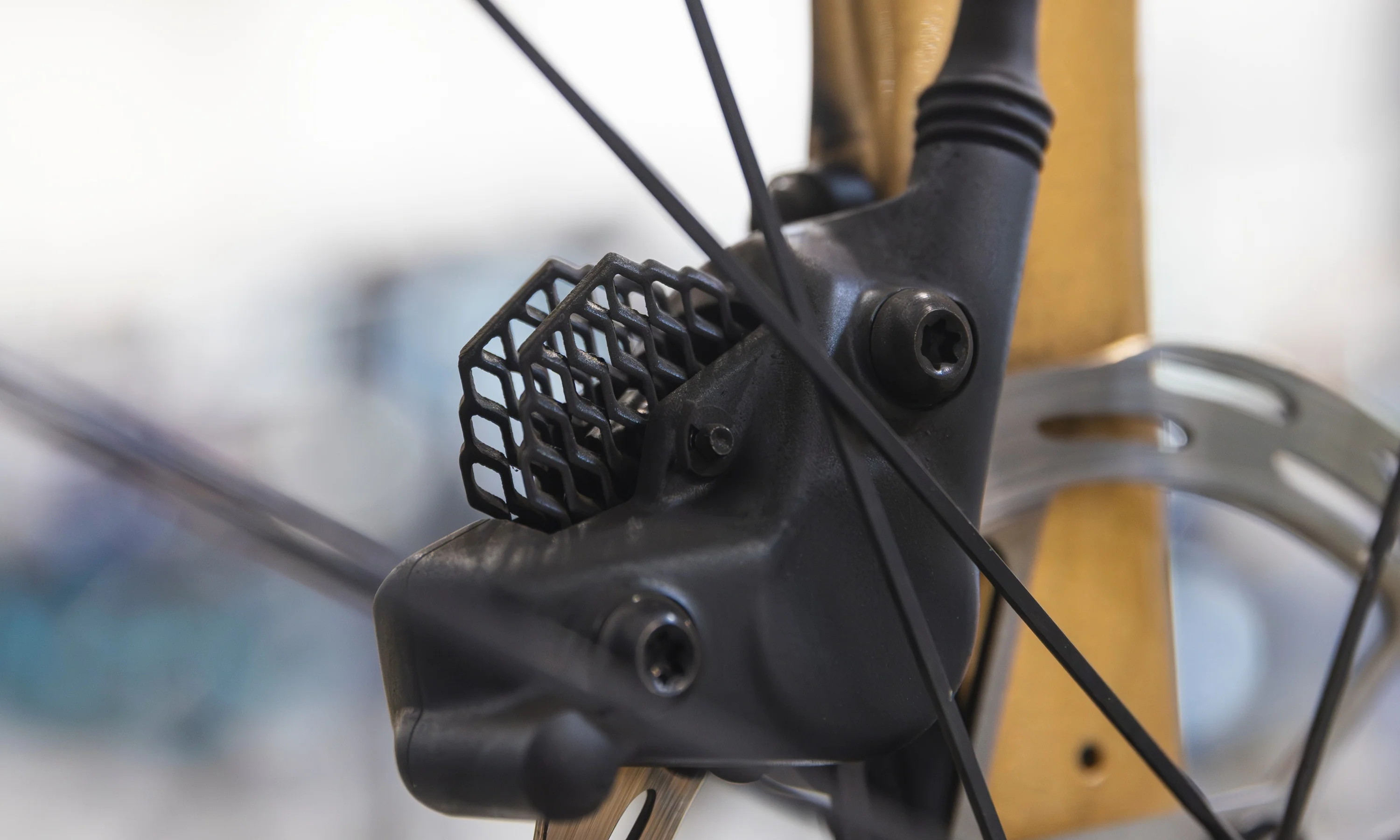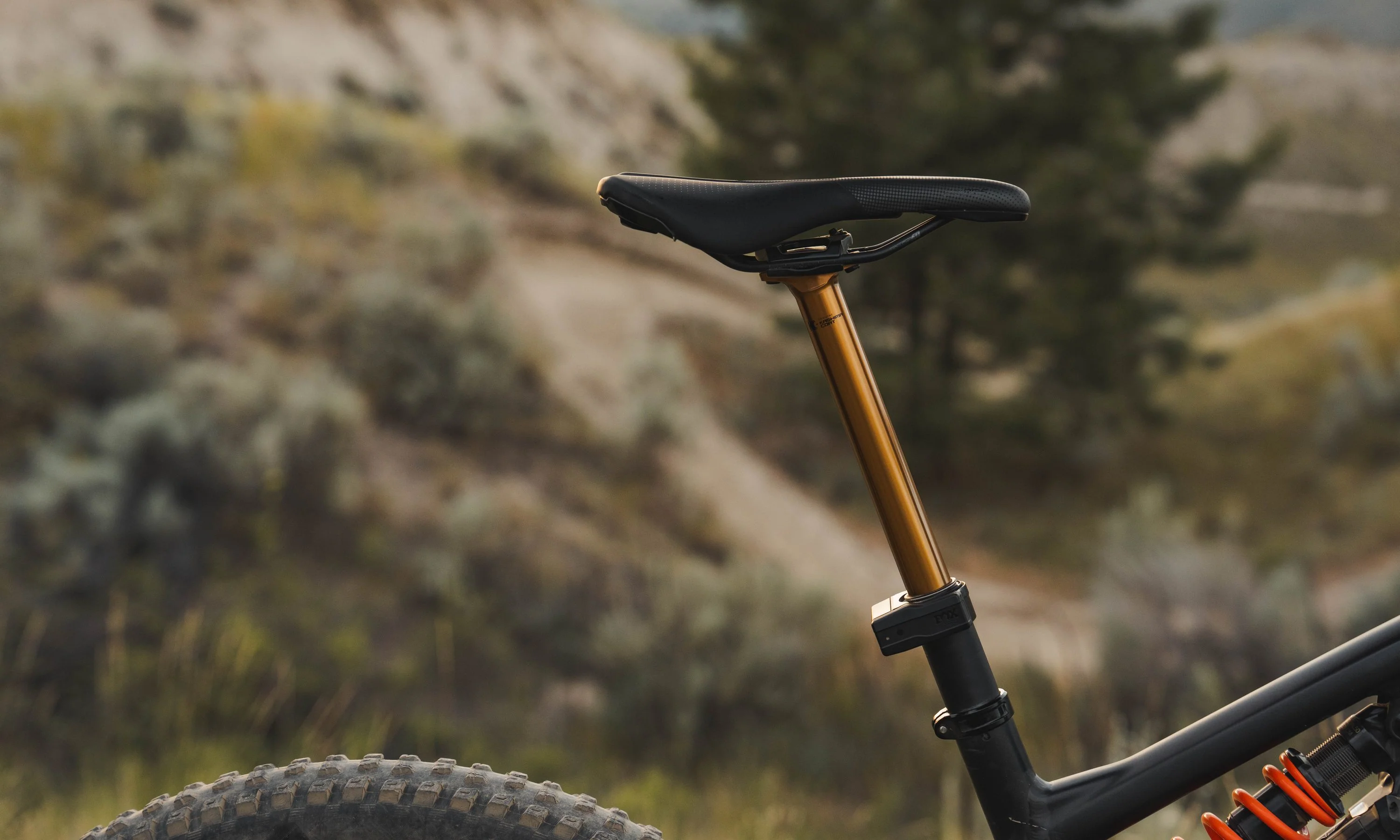Illustration by: Will Sweeney
Hi! It’s me! A very average cyclist. Does 3D printing matter to me? Not really!
And yet … I like bikes and cool stuff for my bikes. So it sort of does.
I guess it depends on what you mean by “matter.” Is having some new 3D printed tech on my next bike going to make me, an average cyclist, appreciably faster? No. Is a 3D-printed derailleur pulley ever going to be 3x better than a traditionally machined one? I can’t imagine, but that’s the price gap.
And yet…I own ENVE carbon wheels and I don’t even race, so clearly I’m down to buy stuff that may not really matter. This is because bikes are inherently good. And therefore, by the transitive property, blowing money on bikes is also good.
Plus, you don’t have to buy 3D printed gizmos and doodads to recognize the impact the technology could have on the bike industry. The gains companies are already seeing using 3D printing in R&D are already leading to better, lighter, stronger components and gear. And even if you never buy a 3D printed anything, maybe you care about the latest tech in the pro peloton or — gasp — you just like engineering.
So off we go. This is your primer on the state of 3D printing in the cycling world.
[button]Shop all bikes[/button]
What the HELL is 3D printing?
First of all, the cool kids don’t call it 3D printing. It’s called “additive manufacturing,” or AM. As that name suggests, AM is the process of building something by adding materials, little by little. Clearly this contrasts with most traditional manufacturing where things are created by cutting the right shape out of a bigger piece of material. In 2022, just about everyone is familiar with 3D printing in the plastics world. It’s easy to conceptualize: Take a gob of melted plastic, let it harden, add another gob on top of it or next to it, let it harden, add another gob just so. Using a computer and a 3D printer, it’s possible to position enough tiny gobs so precisely that an object can effectively be printed, layer by layer. Then, Hey look! A chess set!
But additive manufacturing goes beyond plastic too. Metal and carbon fiber are both printable. Human cells are printable. Electronics are printable.
AM efficiently uses the exact amount of material needed for the part (with some caveats). There are no scraps, no shavings, no wasted hunks of titanium. It also enables users to create shapes and designs that are physically impossible to fabricate with other manufacturing techniques. So, it’s great for custom parts and one-off projects.
What the HELL does any of this have to do with bikes?
Performance and weight. The aerospace industry is at the forefront of additive manufacturing for this reason. To get a kilogram of anything into space onboard a Falcon 9 costs about $4,640, meaning it’s going to cost you a cool $32k to launch any pro cyclist’s road bike into low Earth orbit. (Does this mean Elon Musk is actually the ultimate weight weenie?)
AM parts have no extra material, no extra weight. The precision afforded by the technique allows for extremely specific carbon layup techniques. Manufacturers only add material where they want it, giving them better control of the orientation and type of carbon fibers used at any point in a component or frame.
Is this sounding attractive to cyclists yet?
[newsletter]
There’s also this whole idea of digitizing the design process. AM works best in combination with other software applications like autoCAD, where users can build three-dimensional models of whatever they’re trying to design. Companies like Predator Cycling are pushing the boundaries of what’s possible in these design suites, but moving the design process to the digital comes with a host of advantages.
When used strategically, it can shorten R&D times, allow frames and components to be resized and tweaked without losing the qualities of the original design. Users can input specific design intents that the software will hold constant as other changes are applied to the model. Say, for instance, you wanted a bottom bracket with a frame width of 132mm. Using parametric modeling, you could ensure that that width remains constant even as you change between small, medium, and large frame sizes. Or if you wanted a rear triangle with a certain lateral stiffness, the computer could suggest adding or removing material in certain places to account for a longer or shorter chain stay.
In fact, there’s a whole area of computer assisted design (CAD), known as topology optimization and generative design, wherein the computer tries to arrive at an optimal solution to a set of design constraints by testing basically every possible arrangement of material. In theory, you could let the computer build a whole frame. All you’d need to do is enter things like head tube diameter, bottom bracket dimensions, rear axle width, etc, and the computer will give you a bike that has those properties. You can then optimize for weight, or strength, or whatever other parameter you’re after. The more design inputs you give, the more constrained the output will be, but if you give the computer enough freedom, it will come up with some really wild solutions to what it thinks the bike should look like. To actually realize these shapes, you’re going to need a 3D printer … and several engineers that really know what they’re doing. Predator is among the leaders in all these CAD strategies. Their latest bike, the RF20, was built digitally using generative design and even modeled for aerodynamics virtually.
So why the HELL aren’t we 3D printing everything?
AM does have some major drawbacks. First and foremost, it’s slow. And since it’s slow, it’s also expensive. So, if you’re going to 3D print something, you better have a damn good reason why. With the technology gaining popularity, Predator Cycling CEO Aram Goganian likens it to the carbon craze of the ‘90s in the industry. “You had to have everything carbon,” he says. “It was better if it was carbon. Now you’re starting to see that happen with generative and with 3D print. Just because you can, you are. If you’re able to make a $300 water bottle cage, you’re able to do a lot of really cool things. But does a $300 water bottle cage ever really make sense?”
There’s also two of cycling’s most obnoxious elephants in the room still holding things up. The first is the UCI and its strict limits on the dimensions of bicycles. Any pro peloton bike must have seat stays, it must have a front triangle, and “the distance between the bottom bracket spindle and the ground must be between 24 cm and 30 cm,” just to name a few. Any bike used by a pro team must also be commercially available. While these rules keep bikes looking like bikes and keep the playing field somewhat level, they certainly also stifle innovation. If a bike is too fast or too wild, it’s likely to get banned a-la the Lotus Sport superbike.
RIP you bizarre, beautiful bastard.
The second thing holding up 3D printing from pushing further into the sport is aerodynamics. Modeling aerodynamics (or fluids of any kind, really) is tough. Goganian notes that there’s really only one physics engine even available to begin trying to model how slippery a virtual frame might be, and with aero being everything, it’s often still better to design a frame in more traditional ways and just test it in a wind tunnel.
Until the costs come down, the modeling tech improves, and the UCI decides to be more like F1, AM is mostly likely to remain on the R&D side of operations rather than in use as a production tool.
But there are a few commercially available products you can buy…
So how the HELL can I get some 3D printed hotness for my bike?
Well if you’ve got $450 and you’re in the market for a saddle you can buy this one. Specialized has taken a somewhat unique approach to applying AM tech to their offerings, choosing to focus on contact points rather than frames or components. For saddles, 3D printing offers just the right amount of targeted squish, says Garrett Getter, the leader of the Specialized’s Body Geometry division. Plastics are easy to print and versatile, and contact points like insoles and saddles are less heavily scrutinized by the UCI. That Power Mirror saddle, despite its absurd price tag, has been nearly universally lauded by reviewers, and since its release in 2020, it has become one of the most popular saddles on WorldTour teams.
Getter says that, in this case, AM was ultimately the cheapest and fastest way to get the just-so compliance out of the saddle. “Variable density is very important [in saddles]. And, and that's where 3D printing is pretty great. [Our traditional saddles] use four different types of foam, and they're all put together in into one saddle,” he says. “We took a product that was actually really complex to make using foam, and said, turn this into a 3D printed product.”
Even Goganian at Predator thinks the saddle is impressive. “It’s a product that makes sense and in the future will scale, probably pretty well,” he says. “Any time you’re talking about interacting with a person’s body — like touch points — I think it makes a lot of sense and it becomes really interesting.”
Getter is tight-lipped about what else Specialized is hoping to 3D print in the future, but he says anything with foam is certainly up for consideration. Chamois, gloves, bar grips, shoes, and even helmets are potential candidates that the company is thinking about.
If you want a 3D printed bottle cage that doesn’t cost $300, Predator has got you covered, and yes, it’s made with additive manufacturing. For $40, you can have a lightweight bottle cage that you can claim was designed by AI and machine learning. “It has like 42% elongation before breaking, so it has a really good strong grip on a bottle. It’s like 200% tougher than reinforced nylon injection molded bottle cages that we tested against,” says Goganian “It comes in at a price point that makes sense in the industry and spec-wise we hit some good numbers.”
It may not be quite as sexy as a fully 3D printed wheelset or frame, but Goganian thinks those days are coming … eventually. “We think we know how to do something. A bike has been made of three triangles forever. We think that’s the best way to make something, but is it the best way to make something?” says Goganian. “Topology optimization, generative design, simulation in general helps you remove those biases. It takes it away and lets you see when you put those data points in, what comes out of it. I think that’s interesting and the more people start thinking in that perspective it’s going to drastically change our industry.”

























